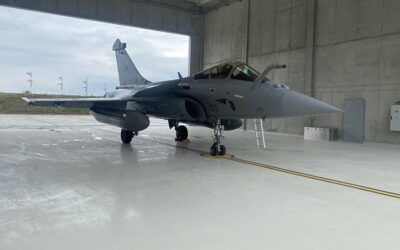Military Helicopter Conference Addresses International Modernisation Issues
“We are going through a period of modernisation and realignment. We are getting outselves match fit for contingency,” said Maj.Gen. Richard Felton, Commander, UK Joint Helicopter Command (JHC), during his opening address at the Military Helicopter Conference 2017 (31 January – 1 February), organised by Defence IQ in London’s Docklands.
He said that the UK’s Strategic Defence and Security Review (SDSR) in 2015 had set the objectives for warfight against peer and near peer advesories by 2025, although it was still as much a requirement to deal with terrorism and aysmettric threats. But the force was transitioning from fighting in an environment (Afghanistan) which it understood and where the threats were relatively unsophisticated, to one which would likely be conjested, cluttered, and contested. “We need forces to be comfortable with unfamiliarity,” he said.
Maj.Gen. Emiro Barrios, Army Aviation Commander, Columbian Army, told delegates that night vision goggles (NVG) had made a very significant difference to combatting the FARC (Fuerzas Armadas Revolucionarias de Colombia) insurgency. “Once we started using night vision goggles -NVG- we obtained an enormous advantage against FARC. We began conducting our first NVG operations in 1998. Back then FARC had 20,000 insurgents, now [as hostilities are ending] they have only 6,000. Helicopters provided the most important capability in defeating FARC in Columbia.”
Breaking down the types of flight he said that there were around three types of mission: low level – 80-200ft; contour flight 25-80ft; and Nap-of-the-earth (NOE) flights from 0-25 feet. But there were numerous difficulties to overcome including adverse weather, extreme geography, insurgent anti-aircraft weapons (AAA), and the need to operate by day/night. Due to altitude and heat, frequent multi-ship operations were required with up to 12 UH-60s required to lift in a fully equipped platoon. He added that at times it was not uncommon for 10 to 15 multi-ship air assaults to be stages in two or three days.
Other speakers included Commodore Chris Smallhorn, Commander, Fleet Air Arm, Royal Australian Navy (RAN), who said that RAN was growing at a rate not seen since WWI. The RAN currently has 16 aviation capable ships, but this is set to grow to 23 by 2025. He said the fielding of the MH-60R was continuing on schedule and that be the end of 2018 the RAN would have eight SeaHAWK flights embarked at sea (double the current figure).
In terms of operations, he said that it had been policy to send bespoke capabilities, often single ships, to dedicated deployments. However with the expansion of the RAN, “we are now moving back to the task group style operation – particularly in the South China Sea.” He added that multi-deck operation was leading to the development of a destributed deck mindset.
Other topics covered during the day included Maintenance, Repair and Overhaul (MRO) and certification issues, the plans being developed to modernise the helicopters of the French Air Force, aviation developments in the German Army’s Rapid Response division and several industry presentations.
Andrew Drwiega

























